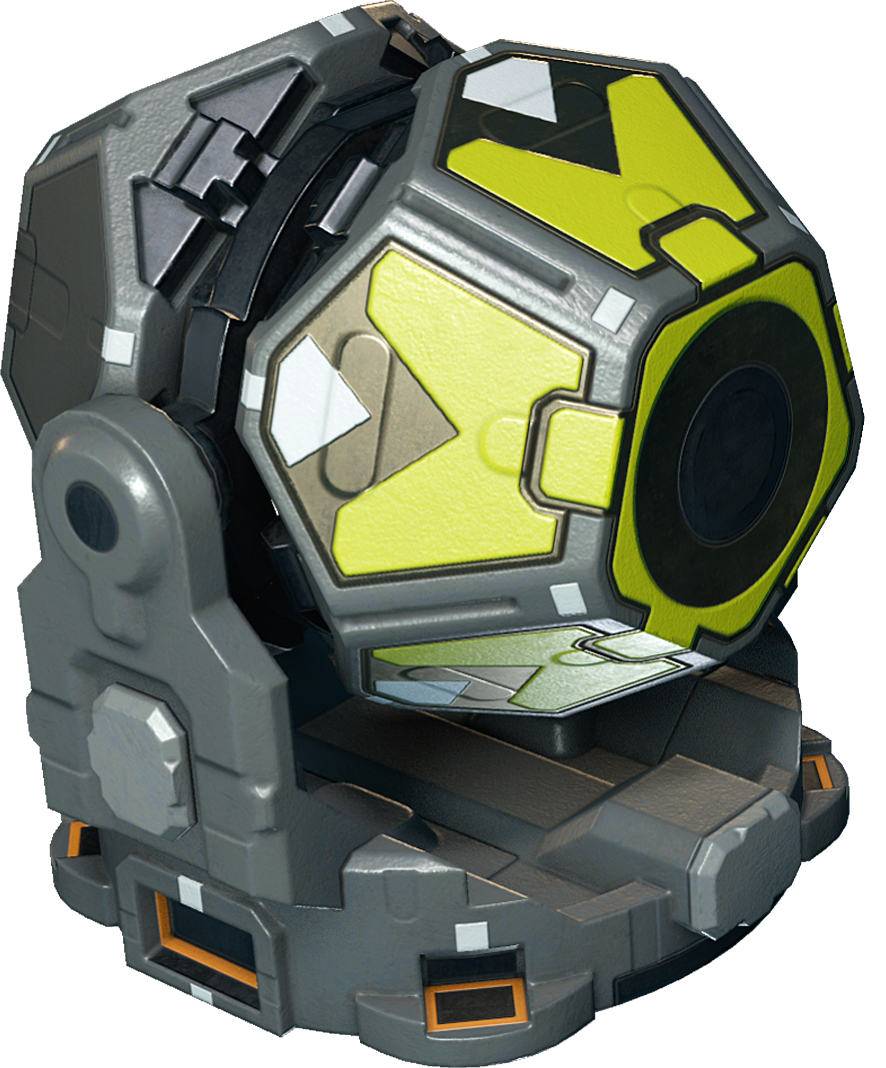Difference between revisions of "Navigation receivers"
Jump to navigation
Jump to search
m (Adding Japanese.) |
(Template conversion) |
||
| Line 6: | Line 6: | ||
|ua=Радіоприймач | |ua=Радіоприймач | ||
|jp=ナビゲーションレシーバー | |jp=ナビゲーションレシーバー | ||
}}{{SB Infobox Begin | |||
|{{SB Infobox Header | |||
|image=[[Image:Radio Receiver.png]] | |||
|factionLogo= | |||
|caption= | |||
|name= | |||
|border=none | |||
}} | |||
|{{SB Infobox Device General Information | |||
|type=Navigation device | |||
|function=Receives signals | |||
|availability=[[Luxury Items]] | |||
|size=<ul><li>156×156×180 cm ''(large)''</li><li>120×120×120 cm ''(small)''</li></ul> | |||
|mass=<ul><li>18,492.47 kg ''(large)''</li><li>5,094 kg ''(small)''</li></ul> | |||
|volume=<ul><li>1,858.54 kv ''(large)''</li><li>511.96 kv ''(small)''</li></ul> | |||
|corrosionResistance=396 | |||
|suppressUnitsKg=1 | |||
|suppressUnitsKv=1 | |||
}} | |||
|{{SB Infobox Device IO | |||
|electricIn=Passive | |||
|electricOut= | |||
|coolantIn= | |||
|coolantOut= | |||
|propellantIn= | |||
|propellantOut= | |||
|fuelIn= | |||
|fuelOut= | |||
|sockets= | |||
|YOLOLchips= | |||
|modInterfaces= | |||
|deviceInterfaces=1 | |||
}} | |||
|{{SB Infobox Device Construction | |||
|headerOverride= | |||
|aegisium= | |||
|ajatite=10% | |||
|arkanium=3% | |||
|bastium=14% | |||
|charodium= | |||
|corazium= | |||
|exorium= | |||
|haderite= | |||
|ice= | |||
|ilmatrium= | |||
|karnite= | |||
|kutonium=15% | |||
|lukium= | |||
|merkerium= | |||
|nhurgite= | |||
|oninum= | |||
|surtrite= | |||
|tengium=40% | |||
|ukonium= | |||
|valkite= | |||
|vokarium=18% | |||
|xhalium= | |||
}} | |||
}} | }} | ||
A navigation receiver is a device that can receive signals sent out by [[Radio transmitters]]. | A navigation receiver is a device that can receive signals sent out by [[Radio transmitters]]. | ||
| Line 23: | Line 78: | ||
== Device fields == | == Device fields == | ||
{|class="wikitable" | {|class="wikitable" | ||
| Line 78: | Line 128: | ||
| 0-3 | | 0-3 | ||
|} | |} | ||
To learn more about how to use fields, consult these wiki pages: | |||
* [[Universal tool|Universal Tool]] | |||
* [[Data networks|Data networks]] | |||
* [[YOLOL|YOLOL]] | |||
[[Category:Devices and machines|Radio transmitters]] | [[Category:Devices and machines|Radio transmitters]] | ||
Revision as of 08:27, 21 May 2021
Navigation receivers
Type Navigation device
Function Receives signals
Availability Luxury Items
Size
- 156×156×180 cm (large)
- 120×120×120 cm (small)
Mass
- 18,492.47 kg (large)
- 5,094 kg (small)
Volume
- 1,858.54 kv (large)
- 511.96 kv (small)
Corrosion resistance 396
Input / Output
Electric input Passive
Device interfaces 1
Composition
A navigation receiver is a device that can receive signals sent out by Radio transmitters.
Basic information
- Have to be pointed to the direction of a transmitter.
- They only look for signals in the area they're pointed at. This means that receivers may have to scan areas section by section to find transmitter messages.
- If a receiver is in the range of a transmitter and is pointed towards the transmitter, the transmitter's message is set to the receiver's "Message"-field.
- Both large and small receivers currently have the same properties.
Device fields
| YOLOL field | description | range |
|---|---|---|
| Message | Found message | 0 |
| SignalStrength | Strength of the found signal, measured in meters | 0 |
| ListenAngle | An angle of 180 coresponds to an omnidirectional receiver. | 0-180 |
| TargetMessage | The message the receiver will exclusively listen to, 0 means listens to all | 0 |
| TargetFrequency | The frequency the receiver will exclusively listen to, 0 means listens to all | 0 |
| Frequency | The frequency of the transmitter currently listened to, 0 if no signal found. | 0 |
| ReceiverPitch | Target pitch of the device | 0 |
| ReceiverCurrentPitch | Current pitch of the device | 0 |
| MaxRotation | Maximum limit for rotation | 180 |
| MinRotation | Minimum limit for rotation | -180 |
| TargetVelocity | Target velocity in which the device rotates | 0-3 |
To learn more about how to use fields, consult these wiki pages:
